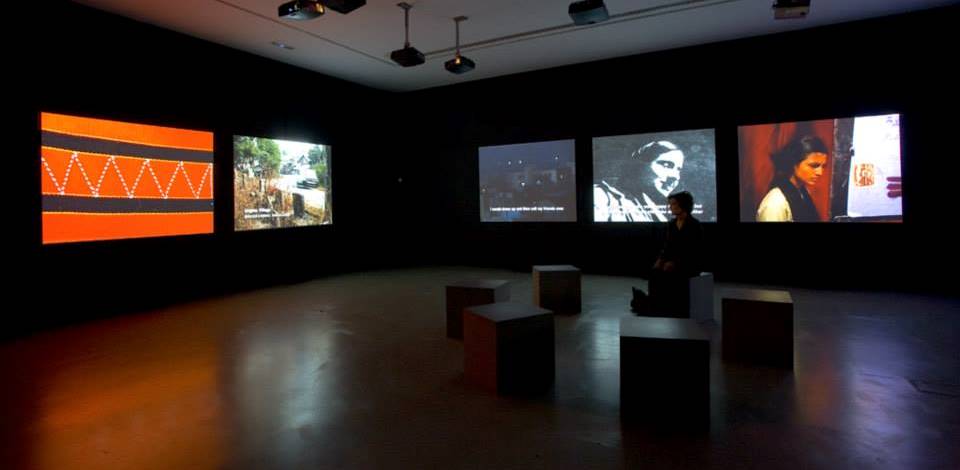An Invitation To Remember: The Lightning Testimonies Comes To India
By Shivani Kaul
30 July, 2014
Countercurrents.org

The 68th anniversary of India's independence approaches, offering over a billion citizens an opportunity to introspect about almost eight decades of self-rule. Official histories constructed through textbooks, various media, festivals, and museums are invoked at this time, national anthems are sung. Left out of these remembrances are more difficult memories of ethnic conflict in the subcontinent, particularly the phenomenon of sexual violence. Estimates of the number who died during the massive Partition-era exchange of population range 200,000 to 1.5 million [1] , with millions left homeless. Over four years, 14.5 million people migrated. [2] Ayesha Kidwai's recent work on the recovery of abducted women on both sides unearths another unspoken human cost of the upheaval; nearly 80,000 abducted women were recovered by the massive joint operation in the post-Partition aftermath. [3]
The role of community memory and oral histories are vital in reconstructing these and other missing voices, particularly those of women in targeted communities. Narratives of violence endured by women in times of conflict are particularly silenced, remaining dark corridors of the past in many national histories. Unfortunately, these are events that seem to repeat across regions, across time. It is precisely this alternative and often submerged history of conflict in the subcontinent that Amar Kanwar and his team explore in The Lightning Testimonies (2007), a multichannel video installation exhibited in India for the first time this year.
How to remember? What remains, and what gets submerged? asks the artist, as images of a crimson poinsettia multiply across eight screens in the installation. Memories, images, and objects that have survived sexual violence offer their silent testimony to the viewer, who is surrounded by multiple synchronized projections and a careful soundscape in a large, dark projection room. Archival footage, text, still photos, moving images, timelines, and drawings, play across the screens. The experience is simultaneously epic and intimate, bringing together a vast range of epochs, regions, and narratives. Women and communities who have remembered, recorded, and even resisted violence emerge from the work, as the stories eventually converge on one climactic screen. Attacks targeting women of a particular community have been periodic in South Asia . The Lightning Testimonies draws its material from Partition-era Punjab, the Bangladeshi War of Independence, the ethnic violence in Gujarat 2002, the harassment and murder of Dalit women such as in Kharlainji in 2006, and military excesses in Nagaland, in Manipur, and in Kashmir.
The installation has traveled through 17 countries since 2007, drawing audiences across the globe that have found connections to their own collective memory of trauma experienced in a markedly violent 20 th century. Who is the real target in a sexual assault? What creates the environment of impunity required for mass rapes to occur, to go unpunished? If no one listens when a victim speaks, who then can testify? These are some of the difficult questions the work poses to its spectators.
Meanwhile official histories march on, overlooking the need for communities to remember and mourn their dead. Justice is too often passed over in circumstances which implicate people in protected positions of power. But communities and individuals have fought history's silencing. Such instances also abound in this installation: Sabitri and Kanhailal's defiant play Draupadi, courageous mothers denouncing Manorama's murder outside paramilitary headquarters in Imphal, the red kashan woven in honor of Luingamla's defiance, Bilqees Bano's successful case after six years of fighting in and out of Gujarat. In that sense, even The Lightning Testimonies is part of this effort to record, remember, resist. After all, we as the audience also bear witness to these testimonies are possibly even drawn together by this shared act of witnessing. What remains to be seen is how, and if, the viewer chooses to act on this terrible knowledge.
The installation is currently running at the Kiran Nadar Museum from 10:30am-6:30pm, Tuesday-Sunday, as part of the exhibition Is it what you think? curated by Roobina Karode, on through September 31 st , 2014. The duration of one loop is approximately thirty-two minutes. Entry is free and open to all.
We particularly invite students to engage with the installation as part of their curriculum. For more information or to contact us, please visit thelightningtestimonies.blogspot.in or our Facebook page .
[1] Brass, Paul. The partition of India and retributive genocide in the Punjab, 194647: means, methods, and purposes. Journal of Genocide Research (2003) 5(1): 71101.
[2] Bharadwaj, P., Khwaja, A., Mian, A. "The Big March: Migratory Flows after Partition of
British India." Economic and Political Weekly (2008) Vol. 43, No. 35.
[3] Kidwai, Ayesha. Re-Viewing Partition, Re-Claiming Lost Ground: A Critical Recovery of the Recovery Operation. Public Lecture at the Kiran Nadar Museum of Art, New Delhi. July 8th 2014.
Shivani Kaul is an activist-researcher and writer currently based in Delhi. After advocacy and academic research in public health, information society policy, and feminist organizations between India and the US, she is currently exploring the educational and expressive possibilities of community-led media to pursue the same ends of social justice. Email: [email protected]
Comments are moderated
